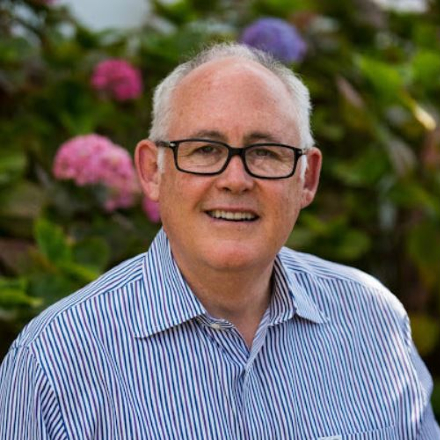
In the News
Losing and Saving the Apple: Capital, Labor and Organizing
-
Focus Areas
Healthy Communities -
Issues
Nutrition & Food Security, Rural Health -
Expertise
Coalition & Network Building -
Programs
Roots of Change
Long ago, the apple industry coined and popularized the slogan, “An apple a day keeps the doctor away.” In Sebastopol, California, eating apples, as well as growing and harvesting apples, was once an essential part of the culture, and at the heart of the economy of the whole region. It was an act of patriotism and local pride to consume apples.
At harvest, the whole town of Sebastopol, where I lived for nearly 40 years, smelled of riple apples and stank of the waste product of the apples when they were turned into juice and sauce. The railroad brought apples from orchards to processing plants. The tracks once went down the center of Main Street. Then progress, suburbanization and gentrification arrived, the tracks were ripped up and Main Street became one-way.
Orchards were subdivided, houses, some of them McMansions were built and sold, and vineyards soon spread across the whole landscape. Grapes are now the monocrop; everywhere one turns it looks nearly the same, with rows and rows of grapes running uphill and downhill and across valleys in military fashion. It’s a similar story elsewhere around the world, though the crop differs.
Not long ago, in Sonoma County, where the apple was once the queen of ag and the grape a knave, the members of Slow Food Russian River (SFRR)—a subdivision of the international organization, Slow Food— created the Sebastopol Gravenstein Apple Presidium. Unanimously, they adopted the Gravenstein (aka the Grav) as a “presidia,” and created a “community apple press,” which is the only one of its kind in the U.S., though there are many in England and a few scattered across Canada and Australia. The apple press doesn’t serve profit but rather people.
In SFRR lingo, the Grav is “traditional, good tasting, sustainably produced and represents a sense of place and culture.” Terroir might be a world to sum up what it means. The Bodega Red Potato, which was once also widely cultivated by farmers in west Sonoma County, is a “presidia,” and, like the Grav, it too is endangered. Global competition cratered the market for the local apple and the local potato.
Paula Shatkin saw the devastation of the apple orchards, right before her eyes, soon after she moved to Sonoma County from L.A. with her husband, David. “We should do something about the apples,” Paula said at a meeting. Michael Dimock, who aided the start of the SFRR chapter or “convivium,” told Paula, “Yeah, you.” An activist and self-defined “thought leader on sustainable food and farming systems,”he chose her wisely, though spontaneously.
Dimock’s environmental organization, Roots of Change (ROC), received a grant from the United States Department of Agriculture. Some of the funds went to SFRR. They boosted the apple project which has become a calling for a group hell-bent on saving the fruit from a tree that once grew wild, that began to be cultivated by humans in Central Asia thousands of years ago and that spread to Europe and North America. John Chapman, the legendary gardener Johnny Appleseed, created countless nurseries and became a missionary for his favorite fruit.
Over the past three decades, sturdy, beautiful, fruit-producing apple trees, from Santa Rosa to Sebastopol and from Graton to Freestone, have been cut down with chain saws or else bulldozed and ripped out by their roots. Like Paula Shatkin and others, I’ve seen orchards decimated to make room for pinot, cab, chardonnay and more. It’s a sad sight. I’ve also watched the community rally around the Grav.
Apple juice lovers have been known to shed tears at the sight of chain-sawed trees, but they have also flexed their muscles. In 2004, a group of impassioned juice lovers got together and formed a group dubbed the “Apple Core,” a whimsical name if ever there was one.
Over the past seven years, (with the notable exception of the 2020 pandemic year) members of the Core have operated the Sebastopol Apple Press from August to October, the height of the apple season. This year for the first time, the Core has mandated masks and vaccinations for everyone, whether they’re volunteers or participants.
The Sebastopol apple project aims not only to save trees (malus domestica) and salvage fruit, but also to safeguard the livelihood of ranchers and farmers. If, as environmentalist Wendell Berry says, “eating is an agricultural act,” eating local apples in season is crucial for the preservation of diversified farming in the region.
Michael Dimock planted his first apple tree in Santa Rosa about a decade ago. Five years later he harvested his first crop. Dimock grows organically. His apples have worms, but they don’t bother him. His godmother, Louise Smith, owns an orchard in Graton. Michael visits her and her daughter, Julie, during apple season and enjoys apple strudel and apple gallant. Lucky man.
If and when apples are no longer grown in Sonoma, he will miss them dearly. Like many SFRR members, Dimock is anxious about the future of the Grav, which has a short shelf-life, doesn’t ship well and relies on local demand for sales, revenue and survival.

I feel sad about the decline and fall of the apple empire. I also understand why that’s happening in our capital-driven system. Global warming might soon make it too warm for Gravensteins, either because they will not get enough chill hours or because pests will overwhelm orchards. The apple is an icon, like the whale, panda, polar bear or any endangered critter for which people rally. Saving Gravensteins has been part of the fight to save food-plant diversity and the diversity of Sonoma County agriculture.Michael Dimock, Roots of Change
Click below to read the full story in CounterPunch.
Originally published by CounterPunch
More Updates


PHI’s Population Health Innovation Lab Joins $22M Five-Year Initiative with Merck Foundation to Improve Cardiovascular Care

Call for Speakers: 2026 Americans with Disabilities Act Virtual Conference

“Federal Food Assistance Programs Sustain Families” Statement from the Public Health Institute on SNAP Funding
Work With Us
You change the world. We do the rest. Explore fiscal sponsorship at PHI.
Support Us
Together, we can accelerate our response to public health’s most critical issues.
Find Employment
Begin your career at the Public Health Institute.
